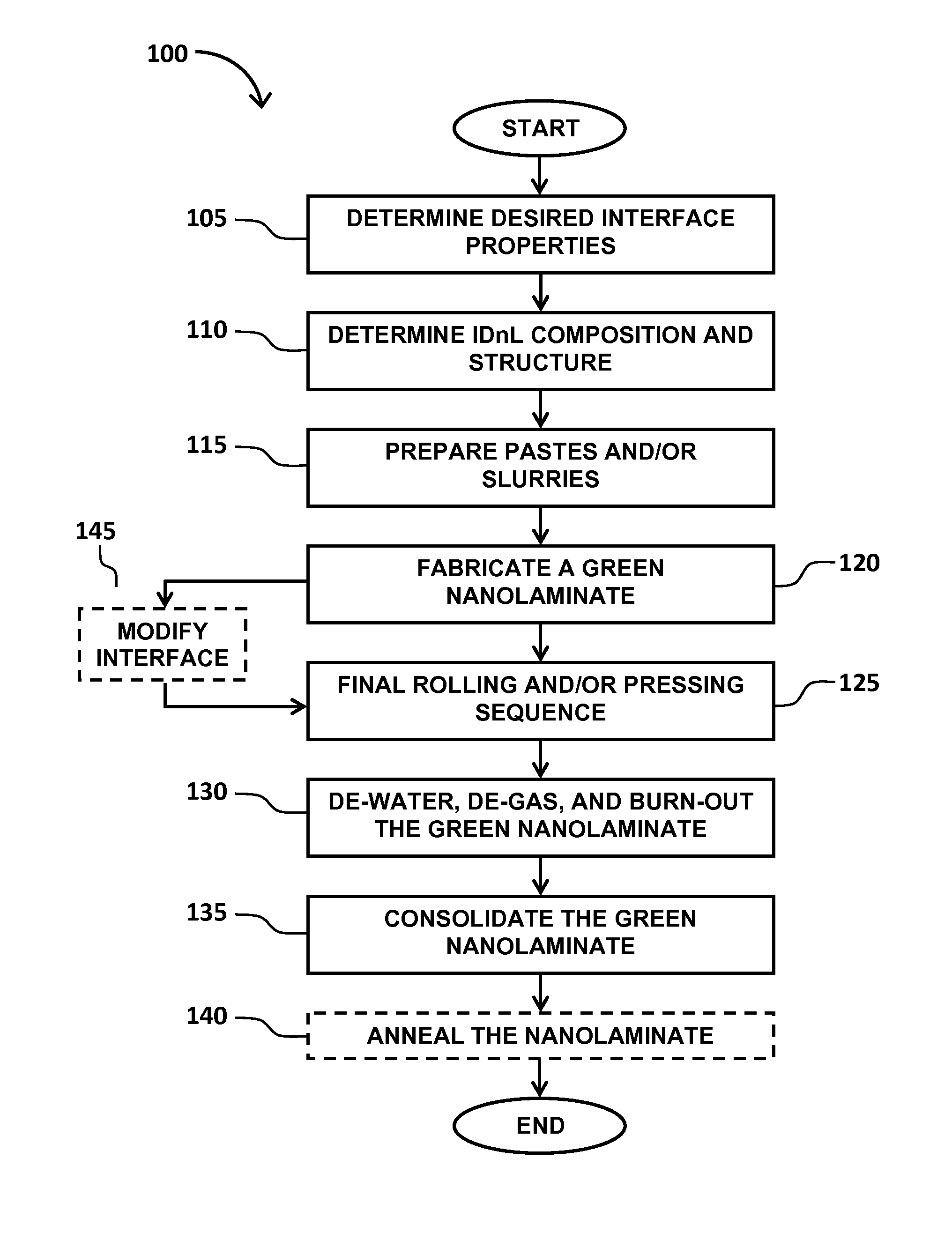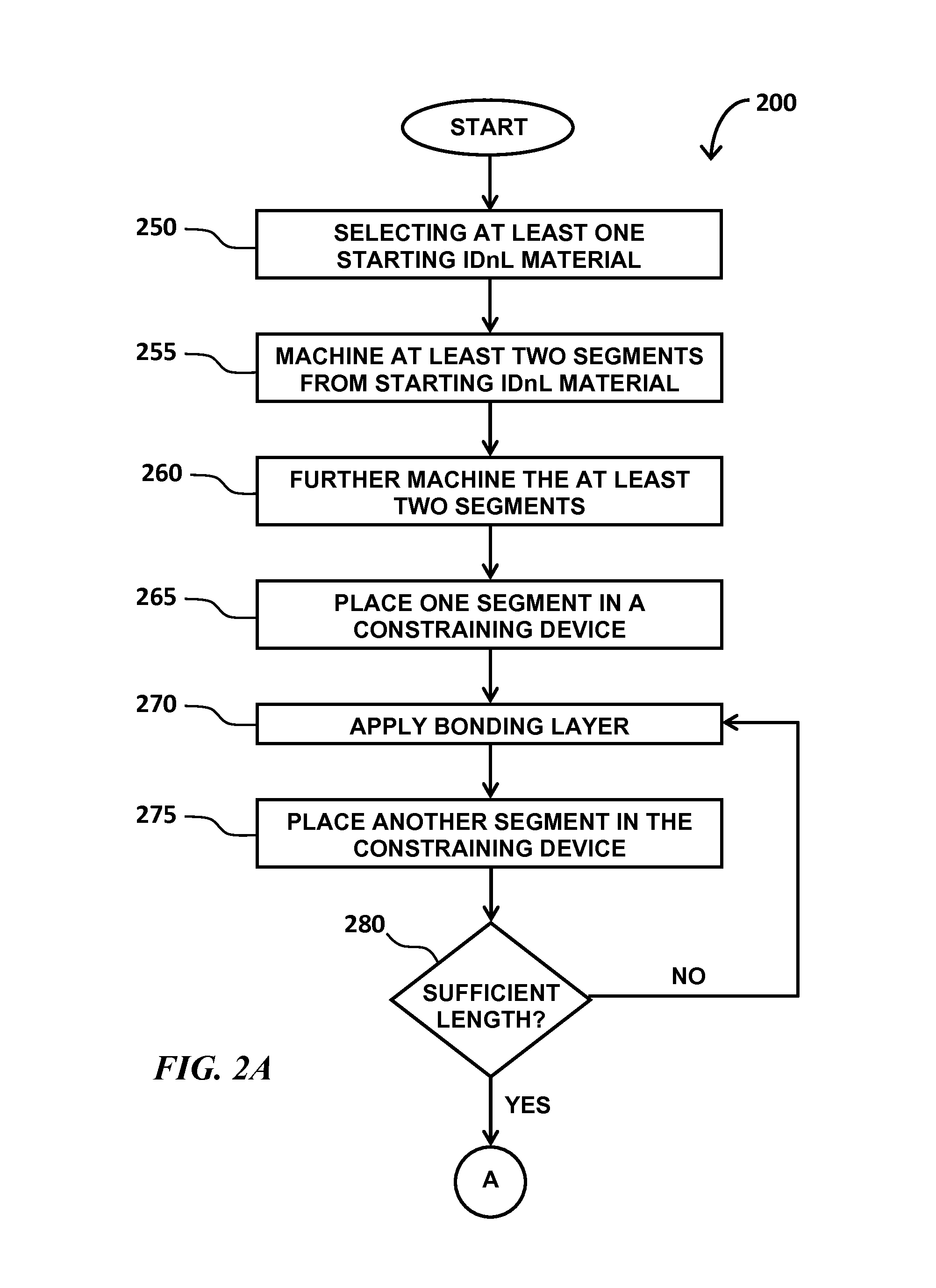Methods for fabrication of parts from bulk low-cost interface-defined nanolaminated materials
a technology of interface-defined nanolaminates and parts, applied in the field of nanolaminates, can solve the problems of reducing the efficiency of laminated materials, etc., to achieve novel, highly desirable properties, and maximize another property of nanolaminates.
- Summary
- Abstract
- Description
- Claims
- Application Information
AI Technical Summary
Benefits of technology
Problems solved by technology
Method used
Image
Examples
Embodiment Construction
[0027]The present invention describes Interface-Defined nanoLaminate (IDnL) materials, which are novel nanolaminate materials fabricated from metals, ceramics, and other materials. The presently described IDnLs may have application in such diverse fields as fast ion conductors, magnetostrictive materials, semiconductors, hydrogen storage materials, superconductors, and environmental barrier materials and coatings. The interfaces between the layers of the IDnL materials may be designed and fabricated from many different materials. By varying the manufacturing process, the degree of atomic coherency may be varied from nearly coherent i.e. with lattice planes crossing from one material to another across the interface to completely incoherent i.e. where the lattice planes end at the interface. The present invention further includes low-cost methods to fabricate large (>0.1 square meter and preferably >1 square meter), bulk quantities of these nanolaminate materials, as well as methods f...
PUM
| Property | Measurement | Unit |
|---|---|---|
| thickness | aaaaa | aaaaa |
| thickness | aaaaa | aaaaa |
| distance | aaaaa | aaaaa |
Abstract
Description
Claims
Application Information
 Login to View More
Login to View More - R&D
- Intellectual Property
- Life Sciences
- Materials
- Tech Scout
- Unparalleled Data Quality
- Higher Quality Content
- 60% Fewer Hallucinations
Browse by: Latest US Patents, China's latest patents, Technical Efficacy Thesaurus, Application Domain, Technology Topic, Popular Technical Reports.
© 2025 PatSnap. All rights reserved.Legal|Privacy policy|Modern Slavery Act Transparency Statement|Sitemap|About US| Contact US: help@patsnap.com



